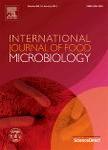版权所有:内蒙古大学图书馆 技术提供:维普资讯• 智图
内蒙古自治区呼和浩特市赛罕区大学西街235号 邮编: 010021

作者机构:Univ Aberdeen Sch Biol Sci Aberdeen AB24 3UU Scotland Univ Georgia Ctr Food Safety Griffin GA USA Natl Inst Hlth Sci Div Biomed Food Res Setagaya Ku Tokyo 1588501 Japan Univ Aberdeen Sch Med Dept Med Microbiol Appl Food Microbiol Grp Aberdeen AB25 2ZD Scotland
出 版 物:《INTERNATIONAL JOURNAL OF FOOD MICROBIOLOGY》 (国际食品微生物学杂志)
年 卷 期:2005年第103卷第1期
页 面:35-47页
核心收录:
学科分类:0710[理学-生物学] 0832[工学-食品科学与工程(可授工学、农学学位)] 08[工学]
主 题:dose response E. coli O157 food outbreaks environmental outbreaks risk assessment Markov Chain Monte Carlo metropolis algorithm epidemiology
摘 要:A human dose response model for Escherichia coli O157 would enable prediction of risk of infection to humans following exposure from either foodborne or environmental pathways. However, due to the severe nature of the disease, volunteer human dose response studies cannot be carried out. Surrogate models from Shigella fed to humans and E. coli O157 to rabbits have been utilised but are significantly different to one another. In addition data obtained by animal exposure may not be representative for human beings. An alternative approach to generating and validating a dose response model is to use quantitative data obtained from actual human outbreaks. This work collates outbreak data obtained from global sources and these are fitted using exponential and beta-Poisson models. The best fitting model was found to be the beta-Poisson model using a beta-binomial likelihood and the authors favour the exact version of this model. The confidence levels in this model encompass a previously published Shigella dose response model. The potential incorporation of this model into QMRAs is discussed together with applications of the model to help explain foodborne outbreaks. (c) 2005 Elsevier B.V. All rights reserved.